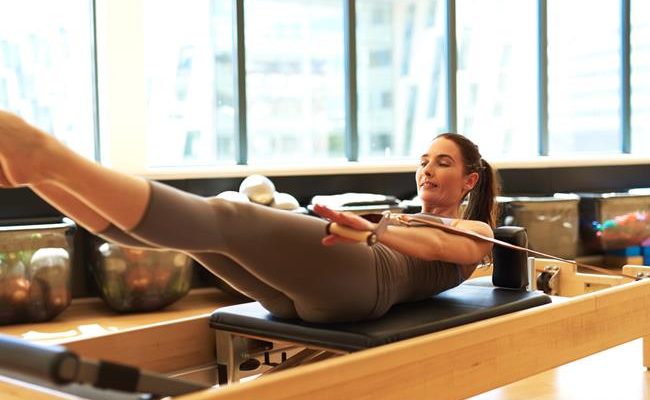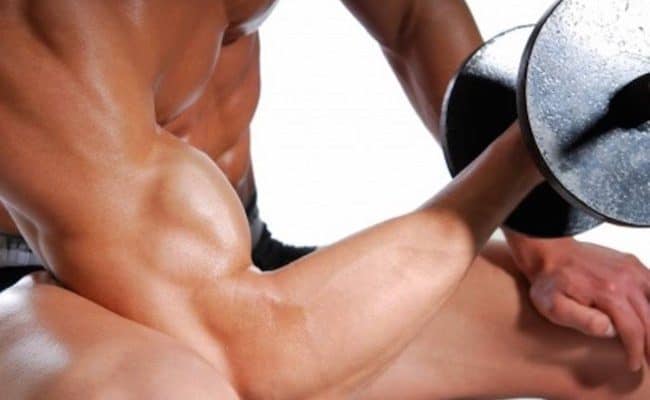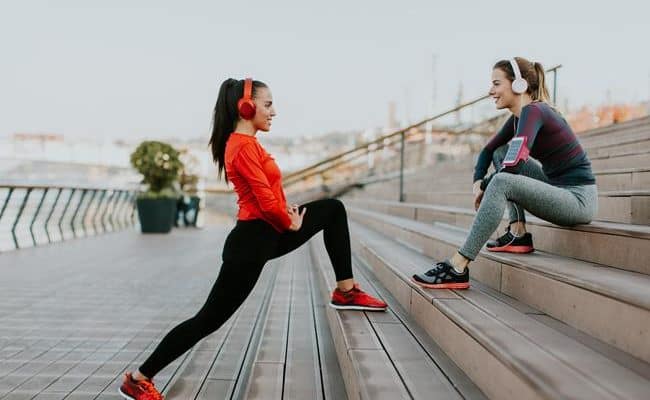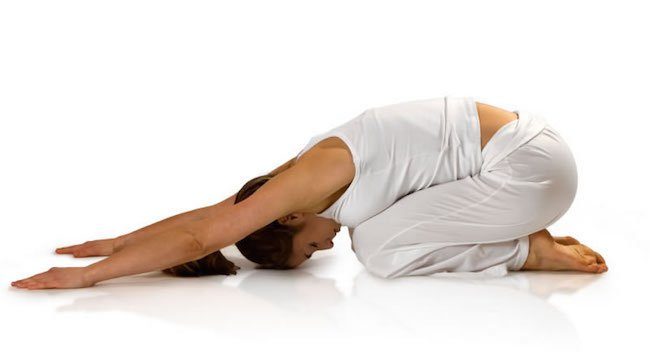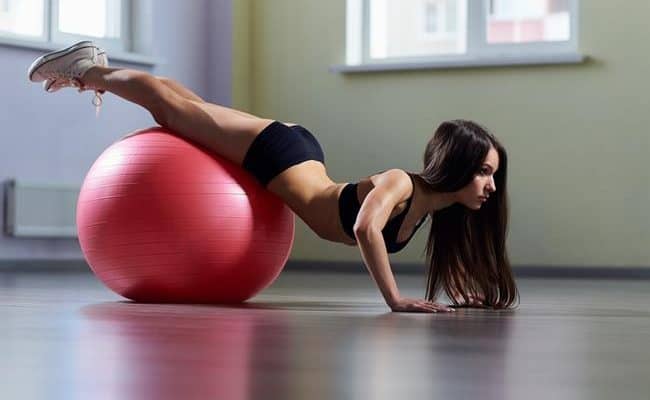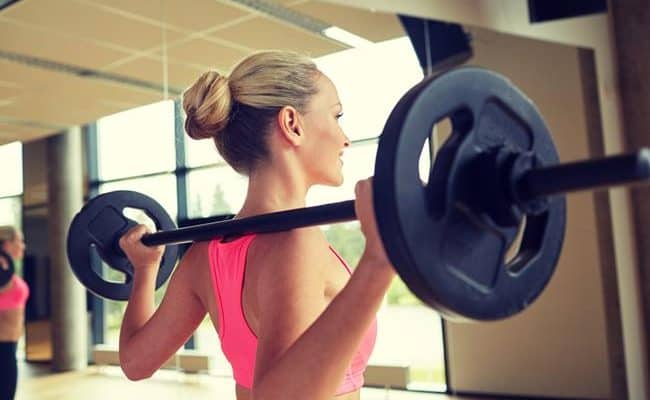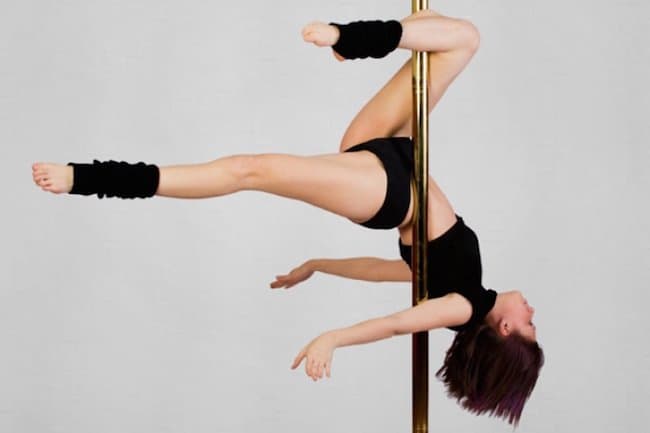
Pole dancing is more known as a ‘sex’ industry tool used to get money out of men. Undoubtedly it has been traditionally used in sexual exploitation and in some ways it has attracted a bad name for itself. However, over the last few years it has gained popularity as a form of exercise and fitness detaching itself from ‘sexual’ elements and trying to gain credibility in the dance and exercise world.
With lessons being offered in studios and gyms we ask the question if it has any value in gaining that trim bikini body most people wish for.
What is it and where did it come from?
Fitness for men and women
Pole dancing belongs in the category of performing arts. It involves performing moves, spins and acrobatic tricks with the use of a vertical pole. As it is performed in the fitness industry it has a lot of similarities with gymnastics and acrobatics. To many people’s surprise as a sport/performing art and fitness regime is practice as much by men as it is by women.
The origins of pole dancing are unclear but rather interesting. Some connect it with tribal dancing in Africa in which women would dance around a pole in front of their future husbands. Others connect it with maypole dancing in the 12th century and some with Mallastambha an ancient Indian sport for men who would perform twists, spins, and acrobatic tricks on an iron pole. In the more modern form pole dancing is seen in the burlesque scene in the 1950s and from there it took off and evolved through the years into its current form.
Pole dancing as a fitness regime
Pole dancing in the form of fitness can be fairly different from the pole dancing offered in sex related clubs. It involves a number of acrobatic tricks and moves and is not necessarily performed in an erotic context but rather in a performance of skill. It combines strength, flexibility, agility, balance, coordination and aerobic capacity. In simple words it provides an all over body workout and all around fitness challenge.
Beginners’ level
What to expect: For those who are new to the sport it mainly involves learning to master spinning around the pole and developing the different techniques. It will mainly develop upper body strength and aerobic capacity. You may see some flexibility work and also core strength to be added on. At a beginners level you will need to set the basis in which you will build on the different moves. For example you may need to learn how to pivot around the pole before performing your first actual spin, or develop the strength on your lower arm and wrists before taking your body weight on it while spinning. The first few lessons may seem slightly boring as you may find that you have not done a single spin and it all is a lot harder than you thought. However, once you have persevered for a couple of lessons and mastered the basics it will all come together.
Areas worked: There are different kinds of hand grips and techniques, but overall the principle is to hold your body spinning around a vertical pole with both hands to begin with and at a more advanced level with one hand. Expect to work your biceps and triceps in your arms your shoulder and upper back muscles. It is one of the few forms of exercise which will make your ‘bingo wings’ (flabby area under the arms) disappear. You will also be working your pectorals in your chest which for women can help in keeping the breasts from going south.
Holding your legs bend (or in other ways) while spinning around the pole it will strengthen your abdominal and core muscles. This may be further worked if the lessons involve floor work and learning dance moves such as body waves or floor drags.
Intermediate and advance level
How you progress will also depend on the way the lessons are structured. Some studios may offer pole aerobics which are mainly exercise sessions with the use of a pole and incorporating some pole moves. Others will be focused on teaching the moves and dancing routines.
What to expect: Slowly you should start performing spins with one hand grip and moving to more complicated spins and acrobatics. Another aspect to develop is linking spinning moves together and learning to invert on the pole. Hanging upside down may not seem very appealing at the beginning but once you have mastered the spinning you will be eager to get up there. However, that is the trickiest part and you will have to have developed all over body strength to get there without serious injuries.
Areas worked: Still increasing upper body strength but moving more to core strength such as abdominals and back. The more spins you perform together the more work you will be doing in your aerobic capacity. Coordination, agility and flexibility are some elements which you will see to improve quite a lot by just practicing spins, floor work and dance movements.
Learning more complex spins and acrobatic tricks as well as inverting upside down on the pole will give a work out to your lower body (legs and butt) as well. Some spins involve keeping your legs to as certain angle (raised of the floor) which will require firming your buttocks or working your thighs. Holding your body on the pole while inverting will require strong leg adductor muscles (inside leg). Some settings will incorporate sets of strengthening exercises such as squats and jumping jacks as part of the lessons apart from just learning moves.
What are the dangers?
It is an intense workout, although it may not seem like it at the beginning. Be prepared to ache especially on your arms and upper body after the first workout. Another thing to come is the bruises. Common ones are on the knees as you learn to negotiate bringing your legs to the pole and spin, your wrists (more like pole burns) from spinning. As you learn to invert and do more complicated acrobatic tricks you will find bruises under your arms, inside leg, dorsal part of the foot (top of the foot) and on the abdominal area (leaning against the pole inverted).
As with all other workouts if you have previous injuries, health complaints/conditions do consult a medical or fitness professional before taking on any exercise. Also because you will be spinning around and potentially turning upside down it may not be appropriate for those who have ear related conditions (can affect balance) and vertigo.
Finally, pole dancing can involve learning different acrobatic tricks. Inverting, turning or hanging off a pole can be dangerous if not performed properly. Don’t be tempted to learn from a DVD or skip the properly qualified teacher route as you could be getting a very bad injury.
Pole dancing is fun and effective
Pole dancing can offer an all over body work out. It can be fun and in a non sexual context. For those sceptical I must admit that in my entire personal pole dancing lessons’ experience I never been in a group which was ‘sexualised’ and it has always been like any other intense workout.
Expect to see your flexibility, strength and balance improve. The main areas you will see big improvements are the arms and upper body followed by the abdominal muscles. Like every other work out it depends how much you will put into it, how often and how intense the lessons will be. It doesn’t have to be all serious and you don’t have to be climbing up and down. It can be as good a workout having fun and a play.

